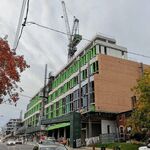King of Kensington
Senior Member
My theory is that the Don River caused a delay in the developments of the lands east of the river. Starting from Downtown, it would have been easier to built north and west than it would have been to build east. By time significant development started east of Don, the west side was already well established.
This is exactly it. The Don was a barrier. In addition, the area around the Lower Don had already emerged as the least desirable part of the city by the time of incorporation in 1834. Later in the 19th century, it was known for its concentration of noxious industries.
Note that the wealthiest district in the 19th century was east of Yonge, along (upper) Jarvis St., with mansions going up there in the 1870s and 1880s.




